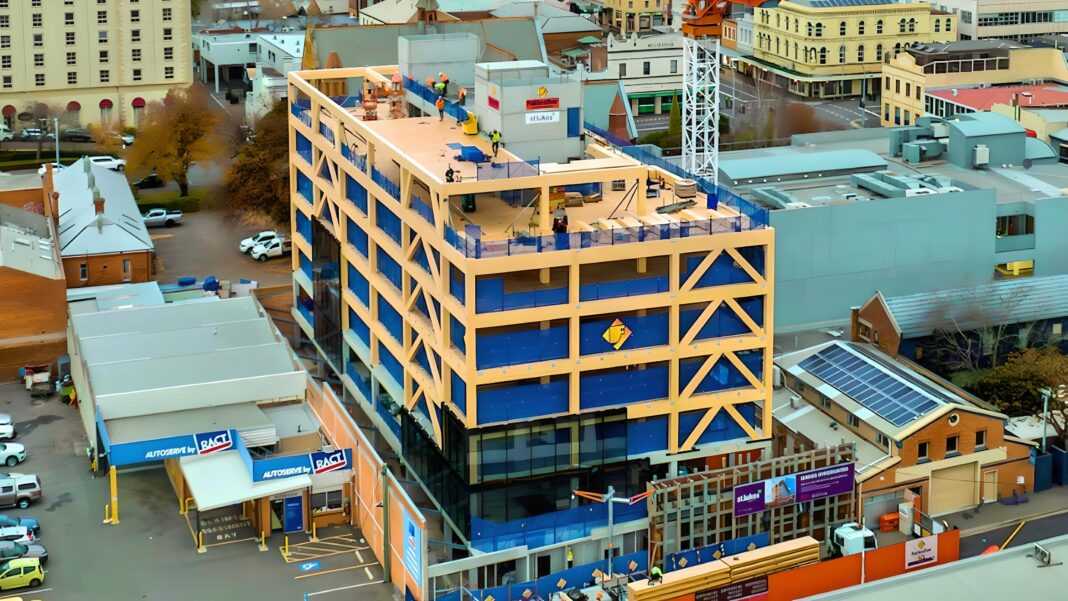‘Embodied carbon’ is on the radar of every developer and landlord across Australia, with timber and, more specifically, mass timber is now seen as a preferred option for low-carbon construction projects.
That is according to Forest and Wood Products Australia (FWPA), which today released its final installation of a three-part Carbon Series, now a key part of the WoodSolutions Technical Design Guide.
The guide offers valuable insights into the potential of timber and wood products in Australia’s construction industry and addresses the contribution of wood products to zero-carbon buildings.
As revealed by Wood Central last month, the pivot towards timber is part of a shifting focus from operational carbon to reducing emissions connected to the construction process.
“Developers know the pathway to net-zero in operations,” according to Davina Rooney, the CEO of the Green Building Council of Australia said in an interview, and “of all the timber buildings registered with the Green Building Council over history, we’ve done more than 50% in the last three years alone.”
However, it is not only new buildings that are being targeted for embodied carbon, with thousands of buildings across Australia requiring retrofit to meet the future needs.
According to Sarah Downey, Head of Marketing and Communication for FWPA, embodied carbon could make up to 85% of Australia’s built environment emissions by 2050, “and the forest and wood products industry stands at the forefront of sustainable solutions.”
“With timber and wood products storing carbon and serving as low-emission materials, the sector plays a crucial role in achieving a ‘net-zero’ built environment.”
That’s why the WoodSolutions Technical Design Guide is so valuable, Ms Downey said. The guide provides high-level guidance on diverse topics related to the built environment, including carbon in wood products, biogenic and fossil carbon, embodied greenhouse gas emissions in buildings, and designing for net zero.
“It also covers embodied carbon policies, green building frameworks, and tools and emphasises the importance of reducing embodied emissions in materials and construction as a crucial step in decarbonising Australia’s built environment,” she said.
The commentary on embodied carbon spans various stages of the building life cycle, explaining its significance, measurement, and the value of considering whole-of-life carbon in design decisions.
“This provides important context on the global carbon cycle, sustainable forest management, and the distinction between biogenic and fossil carbon, aiding decisions regarding bio-based and fossil-based building materials.”
It also highlights the ability of wood products to store carbon for extended periods, both in the built environment and landfill, as well as the importance of life cycle assessments (LCAs) and environmental product declarations.
“It discusses accounting for biogenic carbon during use and at the end of life, along with approaches to biogenic carbon in green building frameworks in Australia and New Zealand,” Ms Downey said.
Most importantly, it summarises Australia’s embodied carbon policies, frameworks, green building certifications, and tools.
For more information about the Carbon Series and WoodSolutions Technical Design Guide, visit the WoodSolutions website.
The WoodSolutions website is the world’s most referenced timber resource and has thousands of case studies, technical webinars, design guides and continual professional development (CPD) courses.






